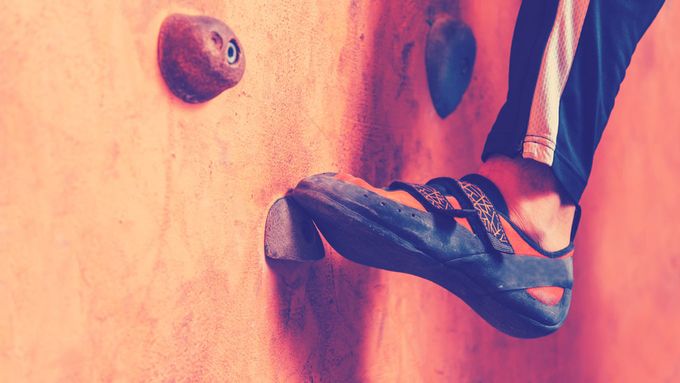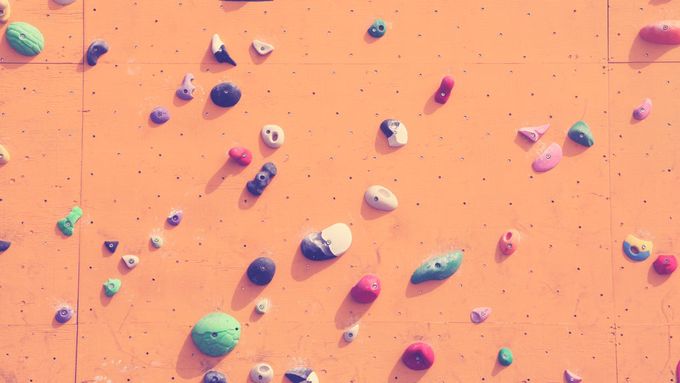
If the idea of climbing appeals, but the fear of clinging to a cliff face suspended by a rope, err, doesn’t, indoor bouldering could be just the answer. Basically indoor climbing but without the ropes, bouldering involves scaling manmade walls and following routes marked out by different coloured climbing holds.
Hang on, no ropes?! Don’t worry, the walls tend to be relatively low – it’s more about the skill than the height – and the floor is covered in protective crash mats, just in case you do fall.
Bouldering Walls in the UK | A Guide to the Best Places to Go
As bouldering has grown in popularity – it’s the most popular category of climbing for beginner climbers – there’s been an explosion in the number of bouldering centres in the UK. Most indoor climbing walls have a bouldering section too, so it’s incredibly easy to get your climbing fix in a safe and fun environment.
Once you’ve mastered bouldering indoors, it’s easy enough to take those same skills and test them outside on real rock too – there are plenty of great outdoor bouldering spots in the UK – and/or move onto other types of climbing, whether that’s at indoor walls or getting roped up at one of Britain’s many excellent outdoor climbing spots.
London Bouldering Walls | 5 Of the Best Indoor Climbing Areas in London
Apart from being great exercise, bouldering requires very little equipment (you don’t need any of the usual rock climbing gear, just a pair of climbing shoes, and your own mats if you’re heading outside) and not a great deal of technical knowledge, making it one of the most accessible sports you’ve probably never thought of trying. We spoke to a bouldering instructor to get the gen.
So, what do I wear for bouldering?

The best way to get involved with bouldering is to book a session at your local climbing wall and turn up in your shorts/leggings and t-shirt. No special climbing kit required.
“You don’t need a lot of equipment to start bouldering, that’s one of the great things about it,” says Yann Genoux, a bouldering instructor at Mile End Wall one of the biggest and best bouldering walls in London.
“The most essential piece of equipment is a good pair of climbing shoes, which you can hire from the centre. Ignore anyone that says climbing in trainers is fine, bouldering requires precise foot placements, so real climbing shoes will make life a lot easier and also lessen the risk of slipping.”
“The most essential piece of equipment you’ll need is a good pair of climbing shoes”
The only other real necessity is a bag to hold some gymnastic chalk, which you can hire or buy at most bouldering centres. This helps with your grip – the last thing you need at the top of a high wall is sweaty palms!
Read our full guide to bouldering gear here.
How do I start bouldering?

“The best way to get started and get familiar with bouldering is simply to do it”
“The best way to get started and get familiar with bouldering is simply to do it,” says Yann. ” A lot of people go their first time with no instruction and climb up and down quickly and easily.”
While that’s a good way to get a feel for the sport, the skill and real enjoyment comes with tackling the routes. “Those different coloured holds are actually routes or ‘problems’,” says Yann. “The idea is to reach the top of the wall by only placing your feet and hands on that colour hold. The colour of the holds indicate how difficult a route you’ll be climbing.”
10 Of The Best Bouldering Walls Across The World
What are the benefits of bouldering?

“The element of risk makes for a rewarding experience”
“Bouldering is a rather under-appreciated strength training workout,” says Yann. “Over a long climbing session you can work on your stamina, but shorter climbs are all about power, and you’ll find that you get a good total body workout as your arms, legs and core will all be engaged throughout.”
“It can actually be a good workout for the brain too, as you’ll need to concentrate while you climb, and working out routes is great for building problem-solving skills. The element of risk makes for a rewarding experience and I find it a lot more fun than lifting weights.”
So you’re ready to give it a go? Make sure you follow Yann’s tips for bouldering prowess.
Bouldering: 5 Essential Tips for Beginners
1) Stretch yourself before you wreck yourself
“Devote some time to stretching before you climb. There’s nothing worse than cramping up mid-movement and ending up on your back on the crash mats.”
2) It’s all about the tekkers
“Holding a lot of tension in your arms will fatigue you quickly, so use your legs and let your arms dead hang until you’ve worked out your next move.”
3) Be methodical
‘Make sure you pick the right route difficulty for you (indicated by the colour of the grips) and then work out your best way up and stick to it. Just going for it can often result in an awkward and often hilarious position that leaves you no choice but to fall.’
4) It’s all about bodyweight
“It’s not about what you can squat or bench when you hit the rock wall. If you want to improve your bouldering skills in the gym you should spend more time on bodyweight exercises like pull-ups and tricep dips to aid your climbing power.”
5) Stay hydrated
“Climbing is thirsty work, keep yourself properly hydrated or risk passing out mid-climb – I’ve seen it happen and it’s not pretty.”
You may also like:
Climbing Tips For Beginners | 10 Things to Remember When You’re Learning Rock Climbing